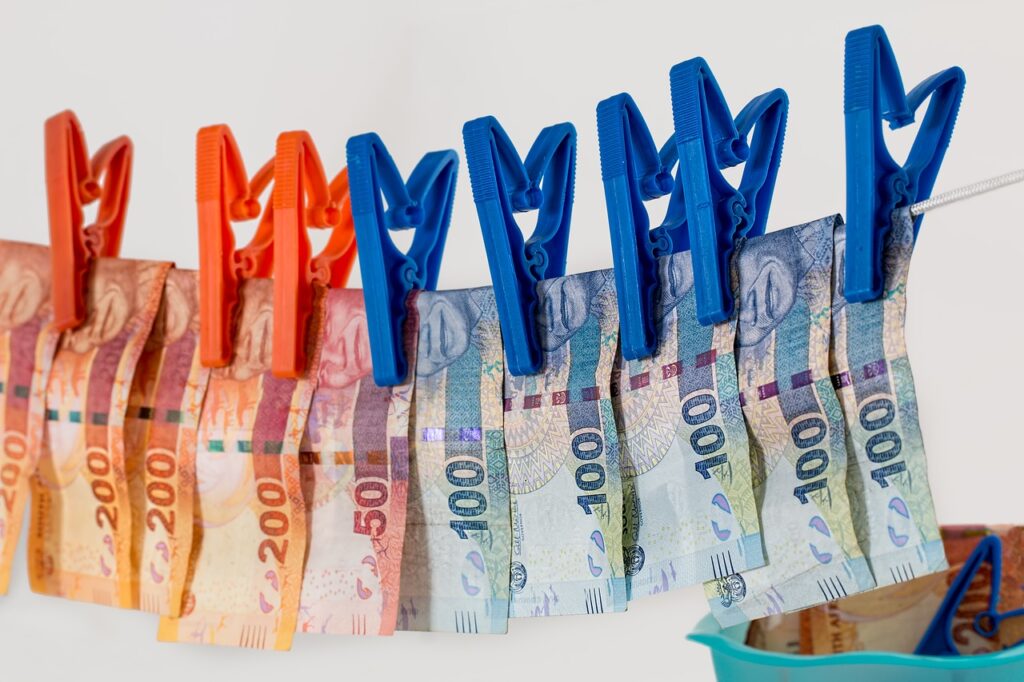A decade is coming to an end and with it ten years of compliance fines. Following the global financial crisis of 2007/2008, we have seen the full force of authorities coming down on financial institutions for the wrongdoings prior the events that brought the financial world to the brink of collapse. A record decade of enforcement actions is not based solely on penalties for the infamous mortgage backed securities and toxic assets that played a big part in the whole story. As a result of more regulatory powers, increased scrutiny and the political will to tighten the screws across jurisdictions we have seen new heights both in terms of quantity and quality of fines for sanctions violations, forex and interest rate manipulation, consumer protection breaches, AML deficiencies, tax evasion and other violations of financial regulations.
The amount is such that listing all cases would exceed not only this article but is stuff for a whole encyclopedia of civil and criminal charges against financial institutions during the span of ten years – and that does not even include private litigation like the $335m settlement of the Bank of NY Mellon FOREX Manipulation Class Action, the case of JPMorgan and the Performers’ Union Fund settle ERISA Action for $150m, or that of over 185,000 current and former Bank of America employees becoming eligible to claim money from a $73m class action settlement.
So, we had to be a little selective but here is a summary of some of the ten heftiest compliance fines of the past decade:
10. The LIBOR Scandal
Tenth place goes to five major international banks that had conspired to manipulating the price of U.S. dollars and euros exchanged in the foreign currency exchange spot market and the banks agreed to pay criminal fines totaling more than $2.5 billion. Citicorp, JPMorgan Chase & Co., Barclays PLC, The Royal Bank of Scotland plc and UBS AG eventually all agreed to to plead guilty to felony charges as what is known as the LIBOR scandal. The court documents focused on the period between December 2007 and January 2013 though the actual fixing might well have been going on for longer. Basically, here is what the court found: “During this time, euro-dollar traders at Citicorp, JPMorgan, Barclays and RBS, which described themselves as members of “The Cartel” (in case there were any doubts about their grasp of their wrongdoing) used an exclusive electronic chat room and coded language to manipulate benchmark exchange rates. Those rates were set through, among other ways, two major daily “fixes,” the 1:15 p.m. European Central Bank fix and the 4:00 p.m. World Markets/Reuters fix. Third parties collect trading data at these times to calculate and publish a daily “fix rate,” which in turn is used to price orders for many large customers. “The Cartel” traders coordinated their trading of U.S. dollars and euros to manipulate the benchmark rates set at the 1:15 p.m. and 4:00 p.m. fixes in an effort to increase their profits. As detailed in the plea agreements, these traders also used their exclusive electronic chats to manipulate the euro-dollar exchange rate in other ways. Members of “The Cartel” manipulated the euro-dollar exchange rate by agreeing to withhold bids or offers for euros or dollars to avoid moving the exchange rate in a direction adverse to open positions held by co-conspirators. By agreeing not to buy or sell at certain times, the traders protected each other’s trading positions by withholding supply of or demand for currency and suppressing competition in the FX market.
What remains is an entirely reformed mechanism of how rates are set, but investigators are apparently still looking into the activity of financial institutions during the high-time of rate fixing with more fines looming.
9. An AML program?
Little more than seven years ago, in December 2012, the DoJ published an announcement that concluded the case of monumental holes in HSBC’s AML program and policy. The global financial giant had violated provisions of the Banking Secrecy Act, the International Emergency Economic Powers Act and the Trading with the Enemy Act for years and in a manner that left little doubt about the corporations seriousness regarding fighting money laundering and financial crime. The court documents showed that HSBC Bank USA had failed to maintain an effective anti-money laundering program and to conduct appropriate due diligence on its foreign correspondent account holders. The HSBC Group violated IEEPA and TWEA by illegally conducting transactions on behalf of customers in Cuba, Iran, Libya, Sudan and Burma – all countries that were subject to sanctions enforced by the Office of Foreign Assets Control (OFAC) at the time of the transactions. Understaffed and incapable of monitoring a proper AML program, the work of the bank’s compliance staff was further undermined by repeated actions of disguising punishable transactions. The bank’s actions also helped facilitate the laundering of at least $881 million in drug proceeds through the U.S. financial system. The epic proportions of these failures and the lengthy period of time they occurred led to a deferred prosecution agreement with the Justice Department as part of which HSBC agreed to forfeit $1.256 billion. By comparison, the largest financial penalty for AML controls failings ever imposed by British regulators was the FCA fine in 2017 for Deutsche Bank to the tune of £163 million because of serious anti-money laundering controls failings.
8. The biggest Hedge Fund in the world
The history of the Man Group goes back to 1783 when it was founded as a sugar cooperage and brokerage by James Man and today is the world’s largest publicly traded hedge fund company with reportedly more than a hundred billion dollars in funds under management. In 2007, the company decided to spin off its brokerage segment as MF Global and shortly after the separation is sort of when the bad news started to pile up. Bad debt provisions, major fines for trading violations, liquidity concerns and subsequent stock price decline, you name it, with the eventual bankruptcy of MF Global in October 2011.
This didn’t stop ongoing and new investigations into the responsibility of MF Global staff and directors, including the only 2010 appointed CEO, Jon Corzine.
Corzine was heavily accused of heavily involved and responsible for the company’s downfall and though in part acquitted, he in the end settled with the CFTC in at the beginning of 2017 for a $5 million fine and a lifetime ban from CFTC markets. The big bat hit the company though in late 2014, when a Federal Court in New York ordered it to pay $1.212 billion in restitution to its customers, as well as a $100 million penalty following additional previous settlements with the CFTC.
7. The Mother of all Ponzi Schemes
Bernie Madoff was the person behind the largest Ponzi scheme in history worth an estimated $65bn. He defrauded investors over decades and was in 2009 sentenced to 150 years in prison. While he planned and executed the scheme with apparently a very small circle of confidants, but others contributed unwittingly or carelessly to the damage. JPMorgan Chase had been accused to have made massive profits from the Madoff account since its inception in 1986, but had committed a number of serious short fallings with regard to legal and compliance obligations like not notifying authorities despite serious concerns and suspicious activity. Following extensive work by the FBI as well as the OCC and FinCEN, JPMorgan Chase was ordered to pay $1.7 billion to the victims of the Madoff fraud amongst other conditions as part of a deferred prosecution agreement.
6. Good News for Shareholders
Credit Suisse for years had been in the focus of tax authorities leading to a number of (kind of) smaller convictions in, amongst other jurisdictions, Brazil, Germany and the U.S. We say smaller because these were eventually eclipsed by the company’s conviction for conspiracy to aid and assist U.S. taxpayers in filing false income tax returns and other documents with the IRS that required Credit Suisse to pay approximately $1.8 billion dollars to the United States, leading to a total of more than $2.5bn in related fines. Since this threat had been hanging over the company’s head for some time, it eventually came to some kind of relief to investors and the share price rose by 1% on the day the penalty was announced…
5. Insider Trading and the End of the Road
The scandal surrounding SAC Capital Advisors and its founder Steven A. Cohen lead to the biggest enforcement action for insider trading in the last decade. The SEC had been investigating the group of hedge funds for several years with a number of office raids and arrests of company staff, with some receiving lengthy prison sentences as well. At the beginning of November 2013, the Manhattan U.S. Attorney announced an agreement to resolve insider trading charges against four companies making about the group of affiliated hedge funds. The SAC Companies did plead guilty to each count in which they are charged of an indictment with securities fraud and wire fraud in connection with a large-scale insider trading scheme. The agreement imposed a $1.8 billion financial penalty on the SAC Companies – the largest insider trading penalty in history – split between a $900 million fine in the criminal case, and a $900 million forfeiture judgment in a civil money laundering and forfeiture action. It also set out that the SAC Companies and their affiliates will no longer accept outside investor funds, practically shutting down its operations as an investment adviser.
4. Subprime Madness Part I
Fourth place goes to a whole host of financial institutions for fines in relation to packaging, securitization, marketing, sale and issuance of residential mortgage-backed securities, i.e. wrongdoing in the GFC before the end of 2008. 21 cases leading to settlements between 2012 and 2017 with authorities like the Federal Housing Finance Agency, the Office of the Comptroller of the Currency, different section of the DoJ, the New York Department of Financial Services, the Consumer Financial Protection Bureau, the U.S. Attorney-Eastern District of New York, and Attorneys General from various U.S. States resulted in fines between $1.925bn to $7.2bn for a grand total of $75.5bn! The list of culprits is the who is who of global financial institutions including Bank of America (three counts), Wells Fargo (three counts across different parts of the group), Citigroup (twice), Deutsche Bank (idem), Royal Bank of Scotland (twice), Goldman Sachs (twice), JP Morgan (also twice), Morgan Stanley, Credit Suisse, Barclays Capital, Ocwen Financial Corporation, and BNP Paribas. And that’s only part of the enforcement fallout that hit financial institutions after the Global Financial Crisis for their involvement in the subprime mortgage market with several “smaller ones” that would have listed further up the list and some even bigger ones as we will see in a moment.
3. Financing Terrorism
And now for the top 3 in our selection of massive compliance fines. On May 1st in 2015, the Department of Justice announced that the Paris-based BNP Paribas was sentenced for conspiring to violate the International Emergency Economic Powers Act (IEEPA) and the Trading with the Enemy Act (TWEA) by processing billions of dollars of transactions through the U.S. financial system on behalf of Sudanese, Iranian and Cuban entities subject to U.S. economic sanctions. As a result, BNP received a five-year probation and was ordered to forfeit $8,833,600,000 to the United States and to pay a $140,000,000 fine, getting it close to a $9billion penalty. It was the end point of, according to the responsible Assistant Attorney General, years of “deliberately disregarding the law and provided rogue nations, and Sudan in particular, with vital access to the global financial system, helping that country’s lawless government to harbor and support terrorists and to persecute its own people”. Hence, an enormous slap on the wrist for a flout of U.S. sanctions laws to an unprecedented extreme, concealing the institution’s tracks, and when that failed choosing not to fully cooperate with U.S. law enforcement. Yowsah!
2. Subprime Madness Part II
Second place goes to JPMorgan for the $13 billion settlement with the DoJ in 2013 to resolve federal and state civil claims arising out of the packaging, marketing, sale and issuance of residential mortgage-backed securities by JPMorgan, Bear Stearns and Washington Mutual. It might not be as saucy as sanctions and money laundering violations, but it meant that some of the damages done before and during the financial crisis could be remedied at least to an extent.
1. Subprime Madness Part III – The winner
The top spot has to go to Bank of America, which has been hit by several of the highest fines in the last ten years. With the exception of the JPMorgan fine we just discussed, BoA has paid up for the five highest compliance fines of the decade, thanks, too, its acquisition of other institutions like Countrywide and Merrill Lynch. The latter were part of a$16.65 billion settlement with the DoJ to resolve federal and state claims against Bank of America and its former and current subsidiaries for financial fraud leading up to the global financial crisis. BoA also contributed almost $11bn to the $25bn agreement with the nation’s five largest mortgage servicers to address mortgage loan servicing and foreclosure abuses. The banking giant also announced a settlement with Fannie Mae worth $10.3bn in 2013. And then there was the settlement with the Federal Housing Finance Agency in 2014 for $9.3bn.
The Bottom Line
So, that’s it: Our list of the biggest fines of the last decade. There were plenty of other interesting cases we had to omit like Citibank’s illegal practices related to credit card add-on products and services including deceptive marketing or the one where Wells Fargo Bank had to pay $575 million for its slightly bizarre account opening exercise. In fact, this was a decade amass of cases of sanctions violations, tax evasion schemes, securities fraud, benchmark manipulation, AML violations or other punishable offenses for breaking financial laws and regulations. In the end, we had to choose from more than 500 cases that matched our parameters of enforcement actions against financial institutions of a certain size (we drew the line at $10m even though that excludes interesting cases like the first ever fine for a trade repository – ESMA v DTCC for a mere €64k, in case you wondered) and still you could easily argue in favor of other interesting examples. Our research is based on a number of sources, but we need to make reference in particular the violations tracker by Good Jobs First that lists information on thousands of cases of corporate misconduct and not just limited to financial services (so you can read about GDPR fines like the €50m for Google). Unfortunately, our verdict for the next decade is that there will be rather more than less work for people tracking such cases. After all, despite the massive clampdown following the GFC, there are no signs of a slowdown in enforcement actions and regulators are still busy holding individuals and corporations accountable for their continued rule breaking. Let’s see what the next decade brings…






